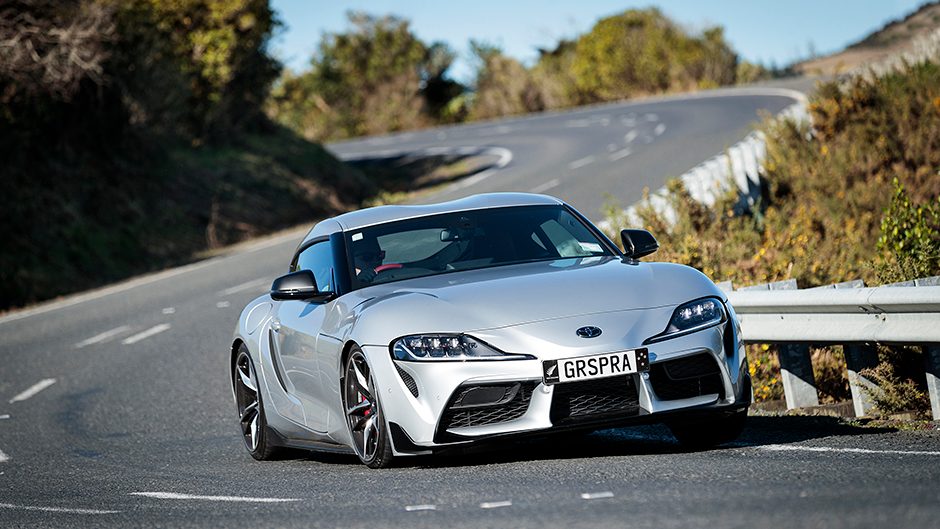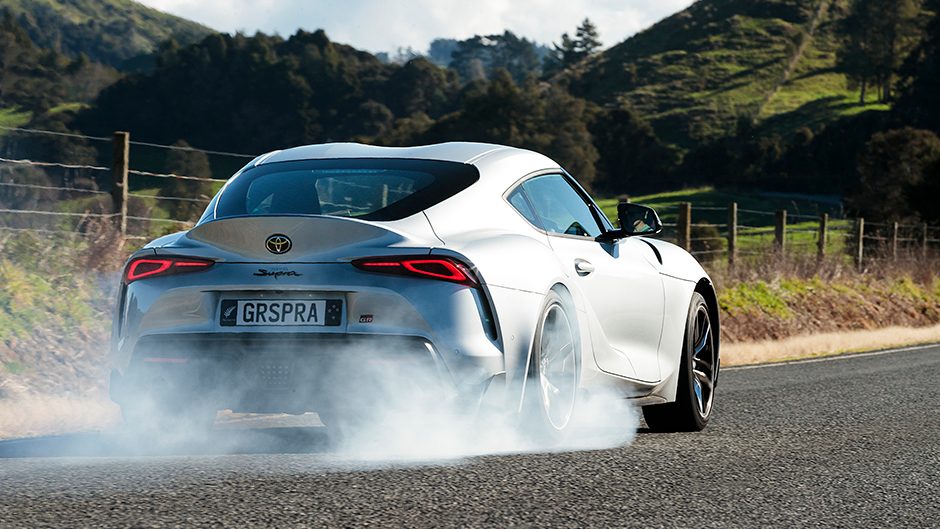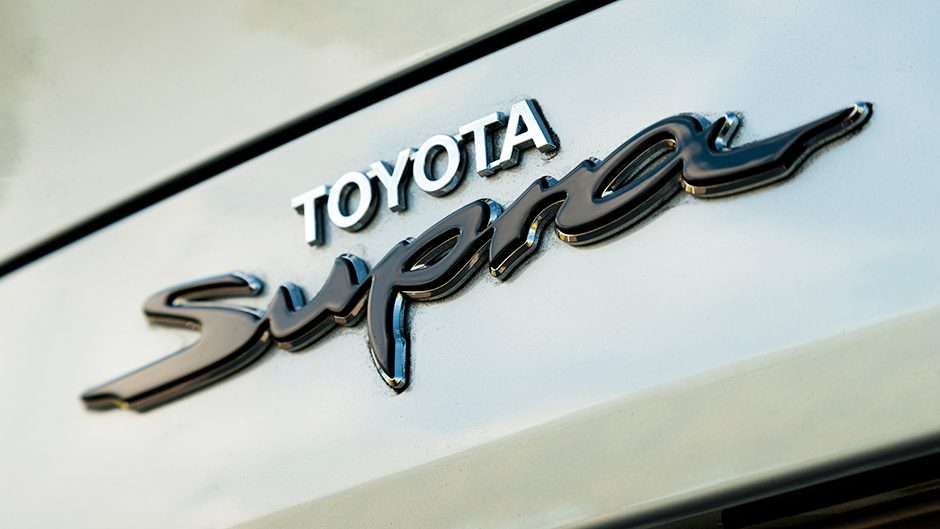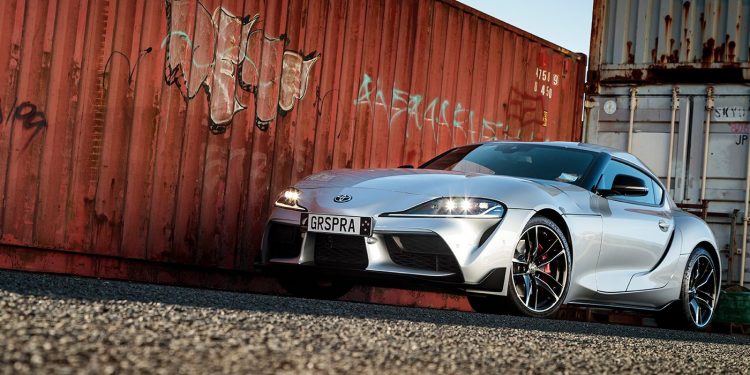2019 Toyota GR Supra review
Words Kyle Cassidy | Photos Tom Gasnier
Seems it would never happen, actually getting to drive Toyota’s new Supra after years of development. And so the question is, has the wait been worth it?
It must be good to be the boss and get what you want. The realisation of a new, fifth-generation Supra is down to one man; Akio Toyoda. Toyota’s supreme emperor is crazy passionate about driving, and racing, which all seems foreign in relation to the T brand.
But times they are a changing. In recent years Toyota has claimed victory at Le Mans and Dakar, and won the WRC. Its road cars now come in more flavours than vanilla. Toyoda has been promising to turn Toyota’s image from boring to desirable since instigating the 86 programme and renewing the line-up. And it’s all coming to fruition with the Corolla and RAV4 having turned the corner out of beige street.
Now we have the crowning glory for Toyota, the new Supra. Supra lands here at $99,990 and falls under Toyota’s drive-away pricing schedule, so that’s what you’ll pay and is covered by the usual benefits of the deal. While a fair chunk of change, in some regards it’s a bargain, cheaper than its roadster cousin, and remember if you can the last Supra sold for $165,000 when we tested it late in 1994. Back then, that would buy you a house; now it’s hardly a deposit.
The GR Supra comes in just one, high-spec guise, with every available option as standard for New Zealand. Tetsuya Tada, chief engineer of Supra, was present for the local reveal of the car, and made the point that Supra is not so much about the numbers but more about the interaction between driver and car. His challenge from the boss was to make it ‘supreme fun to drive’.
The project started back in 2012. Tada-san was still in the process of launching the 86 when he received a call from the boss to start investigating the possibility of a new Supra. The team decided to collaborate with BMW (Toyota dubs collaboration the new industry norm) as they wanted the Supra to have a straight-six engine, the natural partner then being the Germans.
Both firms set out with the goal of designing a sports car to beat the Boxster and Cayman but to do so, they needed to develop a new architecture, one that was short and wide, with a low centre of gravity. Tada-san talks of the Golden Ratio for a sports car, that being the relationship between the track and wheelbase, the ratio derived by dividing the former by the latter. He says 1.6 is optimal for balancing nimble handling with stability. Incidentally, a 911’s ratio is 1.6, and the Cayman is 1.62.

The Supra they say is 1.55, to make it more agile on the turn but Tada-san says the Supra is still stable, thanks in part to its aeros. That bubble-topped roof helps, as does the ducktail spoiler, although he says the most influential feature is the car’s smooth underbody and functional diffuser. The active differential also adds stability, the electronic control of the locking function means it’s constantly variable to manage the rate of yaw, and thus stability in the curve.
Once the platform was finalised, they say the two companies went their separate ways on development. Each car shares the same hard components but it is the way things are tuned that differentiate the two.
Things like suspension set-up, power steering assistance, anything that can be tweaked. And this includes ultimate power. It’s been reported that US examples which have been dyno’d seem to put out more power than what Toyota officially stated, to which Tada-san says ‘hmm, perhaps’. He says it comes down to meeting the Corporate Average Fuel Economy numbers in the US, and that Toyota had more room to move than BMW, allowing them to add a few horsepower to the detriment of fuel economy, which is 0.3L/100km worse than the Z4’s.
Supra is rated to hit 100km/h in 4.3sec, and we managed 4.4 on our usual low grip, coarse chip strip. We messed around with the launch control but the quickest time came after disabling all the traction aids, building two grand up on the brake and then rolling the gas on. There’s more to give there but instead of wasting time and resources gaining a tenth, we were more intent on checking out that golden ratio.
Tada-san said his boss wanted to feel a real connection with the Supra; it had to be a real driver’s car, and on this Tada has delivered. That golden ratio certainly helps; Supra is extremely nimble, which is perhaps it’s dominating character. The steering is quick and the turn in is super sharp, taking a few bends to adapt to just how how fast this changes direction.
Wind your way around a few more corners and you find this is one of those rare cars that really does feel like it’s pivoting around you. There’s a great sense of balance and bite, the front end tracking faithfully. It builds confidence quickly, and so we stepped things up by clicking the traction control off to let the chassis breathe. With the variable diff on the case, this has admirable traction off a bend, those wide Pilot Super Sports helping, but also making a bit of a noise in the process.
But Supra rotates nicely on the gas, and you can feed the power in quite early on the exit, the engine delivery linear and predictable. The auto is on the job, the paddles remaining unflapped, as it does all the right things; downshifting under brakes and holding a gear during a throttle lift. Supra has but two drive modes; Normal and Sport, everything ready for action in the latter.

The suspension is tightened further but there’s a degree of compliance afforded on the rear, helping it ride those mid-corner bumps better. There’s occasional bump steer but nothing that isn’t easily corrected given the responsive and assertive nature of the front end. While quick on the turn, it can carry the speed through them too. It’s able to handle a mammoth lateral load so the mid-corner grip and balance is something else.
Working up to the limits for the photography, when you think it’s about to let go on the front, the trickery of the rear roll centre comes into help out, the rear unloading ever so slightly to relieve the front end, with just the mildest steering correction needed to keep it on line, or a wee helping hand from the ESP when it rotates further than intended. And it’s at this point, heart pumping a bit faster than normal, you think, wow, this is pretty damn cool.
One aspect which Tada-san is most proud of is the sound of his Supra. While it has a familiar tune, its well piped here. While that tyre noise is a constant, it doesn’t smother the six, with a bassy note below 4000rpm before it turns to a raspy wail on its way toward sign off just shy of 7000rpm. To get it sounding so, there’s a degree of digital enhancement. They also pipe some of the engine bay noise into the cabin while they reduced the sound deadening in the rear. The only thing we’d suggest is to somehow make those pops on the overrun more audible. And the brake pedal could do with more feel when you really need to reel it in, going strangely wooden when you stand on them.
Still, that doesn’t detract much from a grand drive experience, one that was certainly worth the wait. And it’s great value in the sports car scheme of things, considering the Cayman S is $150k pre-options, though others like Mustang GT undercut it by $19k. However, Supra is more the precision sports car, but also one that would be okay to live with day to day. On start-up the six sounds off with a bit of a flourish, but soon settles to a refined purr.
Normal mode provides a civil everyday character, the throttle, steering and dampers relaxed for city life. While it’s a sports coupe it rides out the lumps around town. To improve the centre of gravity, they went low on the ride height, so watch those speed bumps.
There’s active cruise and lane keeping, the latter’s steering intervention you can disengage, or you can switch everything off altogether. Blind spot minders are handy however on a low lying coupe, as is a decent wide angle reversing camera, for there’s a limited view behind. It’s not overly difficult to slink down into the well made and appointed cabin. There are lots of BMW bits inside, but that’s no bad thing.
It’s an encapsulating cockpit, the driver and passenger well sectioned off by the big transmission tunnel, which is softly lined for when your knee bangs up against it. The seat is a tad narrow, but gets great adjustment, so too the wheel. Typical of a sports car, cabin storage is minimal but the boot is certainly big enough, complete with a pair of subwoofers.
At launch there were still 20 or so cars available for delivery this year, though by the time you read this, you’ll be looking at 2020 for delivery. But what’s a few more months’ wait? It’ll be worth it.
| Model | Toyota GR Supra | Price | $99,990 |
| Engine | 2998cc, IL6, T/DI, 250kW/500Nm | Drivetrain | 8-speed auto, rear-wheel drive |
| Fuel Use | 7.7L/100km | C02 Output | 177g/km |
| 0-100km/h | 4.41sec | Weight | 1516kg |






